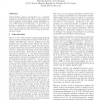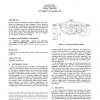828 search results - page 2 / 166 » A New Model of Program Dependences for Reverse Engineering |
BMCBI
2007
13 years 4 months ago
2007
Background: Reverse engineering cellular networks is currently one of the most challenging problems in systems biology. Dynamic Bayesian networks (DBNs) seem to be particularly su...
COMPSAC
2000
IEEE
13 years 9 months ago
2000
IEEE
Understanding program dependencies in a computer program is essential for many software engineering tasks such as program understanding, testing, debugging, reverse engineering, a...
SIGSOFT
2003
ACM
14 years 5 months ago
2003
ACM
Program slicing is a technique to identify statements that may influence the computations at other statements. Precise slicing has been shown to be undecidable for concurrent prog...
WCRE
2003
IEEE
13 years 10 months ago
2003
IEEE
Reverse Engineering is a process fraught with imperfections. The importance of dealing with non-precise, possibly inconsistent data explicitly when interacting with the reverse en...
IWPC
2007
IEEE
13 years 11 months ago
2007
IEEE
A commonly used strategy to address the scalability challenge in object-oriented reverse engineering is to synthesize coarse-grained representations, such as package diagrams. How...



